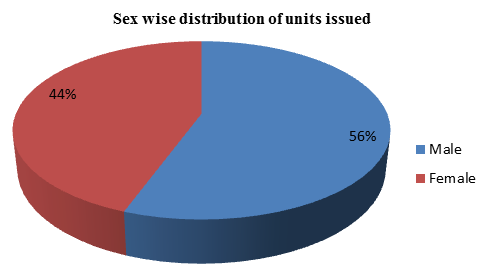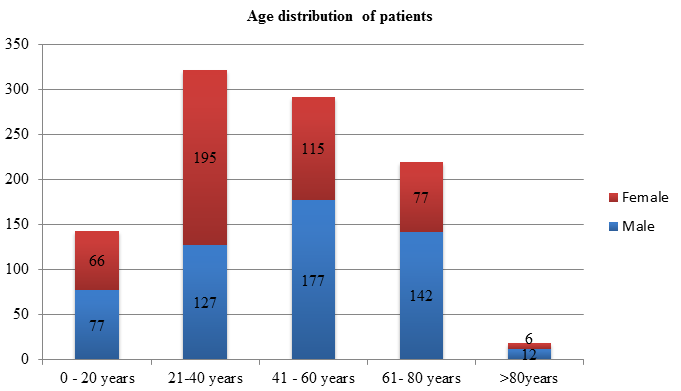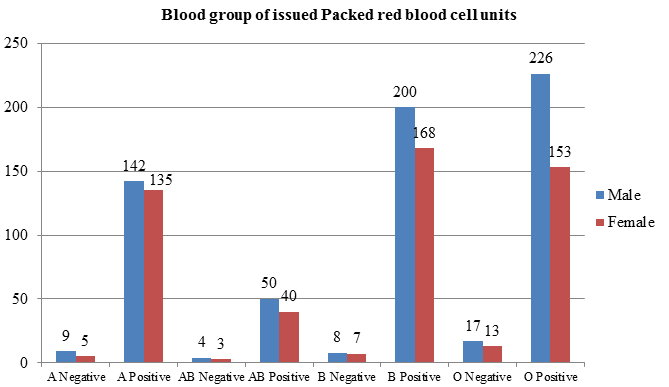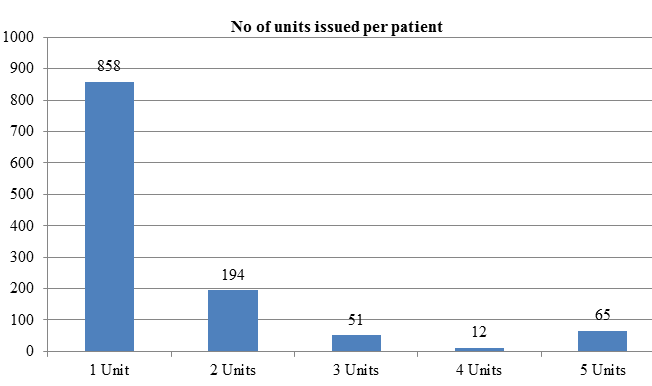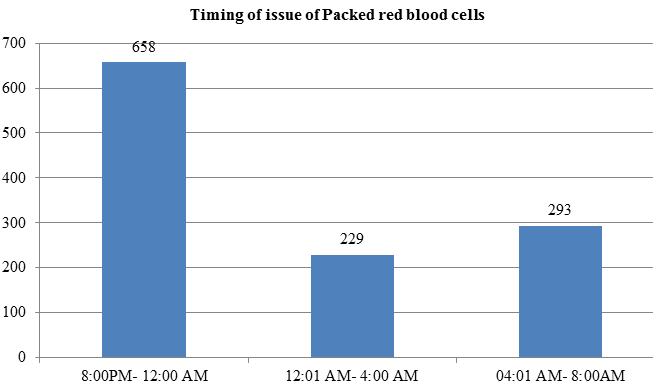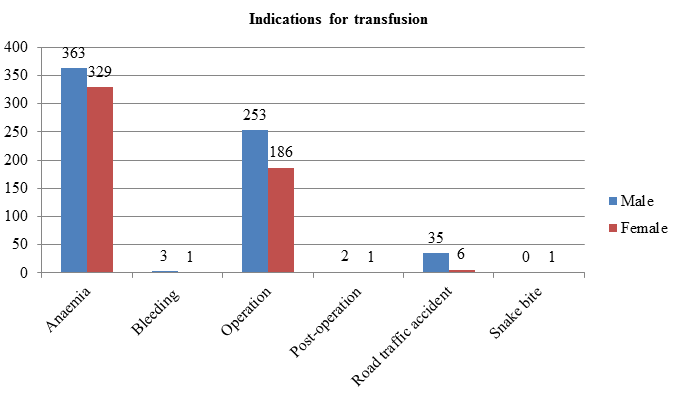Introduction
Blood transfusion services are an integral part of modern health care system playing crucial role in delivery of medical care. James Bundell was first to document the transfusion of blood on 22nd December 1818, this was published in 1819.1,2 The different guidelines for packed red blood cells (PRBC) give a haemoglobin concentration but the decision to transfuse de pends on the clinical condition of the patient.3 Overnight transfusion in non-emergency situations disrupts the sleep of the recipient and his neighbouring patients. Sleep affects wellbeing of the patient, leading to poor outcome of patient.4 In overnight transfusion recipients, there are chances of inadequate monitoring due to lower staff numbers and poor lighting. Poor lighting the ward hinders early detection of clinical problems and adverse reactions.5 Overnight transfusion increases the incidence of transfusion errors.6 This study was conducted to evaluate overnight packed red blood cell transfusions in our hospital which is a tertiary care centre. There are very few similar studies in India.
Materials and Methods
This was a retrospective cross-sectional study conducted at a tertiary care teaching hospital. The study was done over a period of one year from September 2018 to August 2019. The overnight transfusion time interval considered was between 8 PM to 8 AM. All the Packed red blood cell units issued between 8 PM to 8 AM during study period were included in the study. The PRBC units issued during time period other than mentioned above were excluded from the study. The data required for the study was collected from blood bank issue register; PRBC requisition forms and analysed using Microsoft excel software.
Results
During this period of study 988 patients were issued a total of 1,180 units of PRBC. Male to Female ratio of the issued units was 1.3 :1, Males constituted 656(55.6%) and Females were 524(44.4%) (Figure 1). Age of the patients ranged from One day to 93 years. Maximum numbers of patients were in the age group of 21 to 40 years 322(32.6%), followed by 41 to 60 years 292(29.6%), 61 to 80 years 219(22.1%), 0 to 20 years 137(13.9%), least numbers were in age group of more than 80 years 18(1.8%) (Figure 2). Predominant blood group of PRBC units issued was O positive 379(32.1 %) followed by B positive 368(31.2 %), A positive 277(23.5%), AB positive 90(7.6%), O negative 30 (2.5%), B negative 15(1.3%), A negative 14(1.2%), least common being AB negative 7(0.6%) (Figure 3). In our study 858 patients were issued one unit of PRBC each, 97 patients were issued 2 units each, 17 patients were issued 3 units each, 3 patients were issued 4 units each and 13 patients were issued 5 units each (Figure 4). Majority of PRBC units were issued between 8.00 PM to 12.00 AM 658(55.8%), followed by 4.01 to 8.00 AM 293(24.8%) and 12.01 AM to 4.00 AM 229(19.4%) (Figure 5). Most common indication for PRBC issue was Anaemia 692( 58.6%), followed by emergency surgery 439 (37.2%), road traffic accident 41 (3.5%), Bleeding 4(0.3%), Postoperative 4(0.3%) and least common was snake bite 1(0.1%) (Figure 6).
Discussion
Data from recent years show that errors are the source of 87% of transfusion incidents and majority of laboratory errors (40%) occurs during overnight hours because of human factors.7 According to guidelines stable patients should not be given overnight transfusion unless it is clinically essential. Overnight transfusion in patients may be done due to previous radiology commitments, completely utilised intravenous line and sampling errors like wrong labelling of the samples.3,8
In the present study total of 1,180 units of packed red blood cells were issued to 988 recipients. Predominantly PRBC units were issued to male patients (55.6%) ; similar finding w as seen in studies conducted by Loong TY et al and Kandaswamy D et al9,10 where there was a male preponderance in patients who received PRBC transfusion. Maximum number of packed red blood cell units were issued to patients in the age group of 20 to 40 years (62.2%) which was similar to study conducted by Loong TY et al.9 Youngest patient in our study was a 1 day old baby and eldest was a 93 years old. Majority of patients (86.8%) were issued one unit of PRBC each. Majority of PRBC units were issued between 8.00 PM to 12 AM (55.8%) and least were issued between 4.01AM to 8.00 AM which was similar to study conducted by Dhivya Kandaswamy et al.10 Predominant indication for issue of packed red blood cells was anaemia which was similar to other studies conducted by Loong TY et al, Kandaswamy D et al and Donegan R et al.8,9,10
Patients in postoperative care (0.3%), snake bite (0.1%), bleeding (0.3%), road traffic accident (3.5%) and emergency surgery (37.2%) were considered to be in emergency situation requiring immediate transfusion; whereas patients with anaemia (58.6%) as the clinical diagnosis, to whom blood was issued overnight, could have been postponed to the subsequent day. However detailed clinical finding of these patients needs to be taken into consideration, to know the rationale for PRBC transfusion.
Blood transfusion is a complex process which involves blood collection, processing, transfusion to patients; making it vulnerable for errors to occur.10 Errors in transfusion process are life threatening.7 Hence there is a need to reduce the overnight PRBC transfusions in stable patients.
Conclusion
Majority of packed red blood cells issued for transfusion during overnight hours was for anaemia cases, these transfusions can be done during regular working hours. All the hospitals should have guidelines for overnight transfusions. The blood technicians available during these hours is less as comp ared to regular hours, poor lighting and understaffing in the wards all these factors lead poor monitoring of the patient and increases the chances of adverse reaction.

